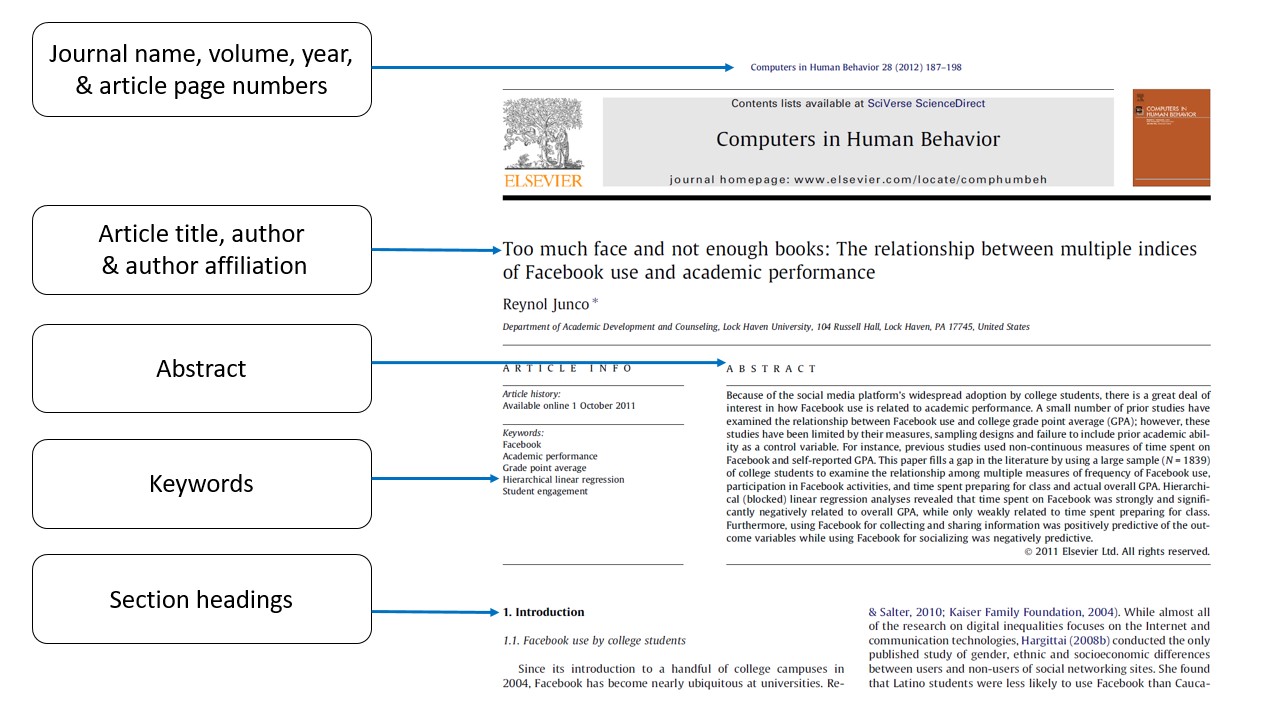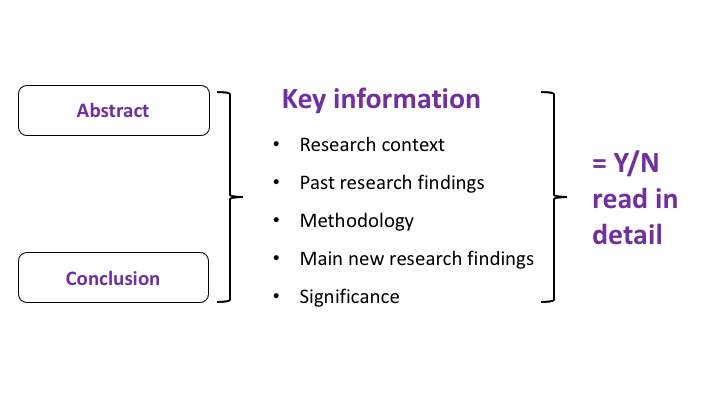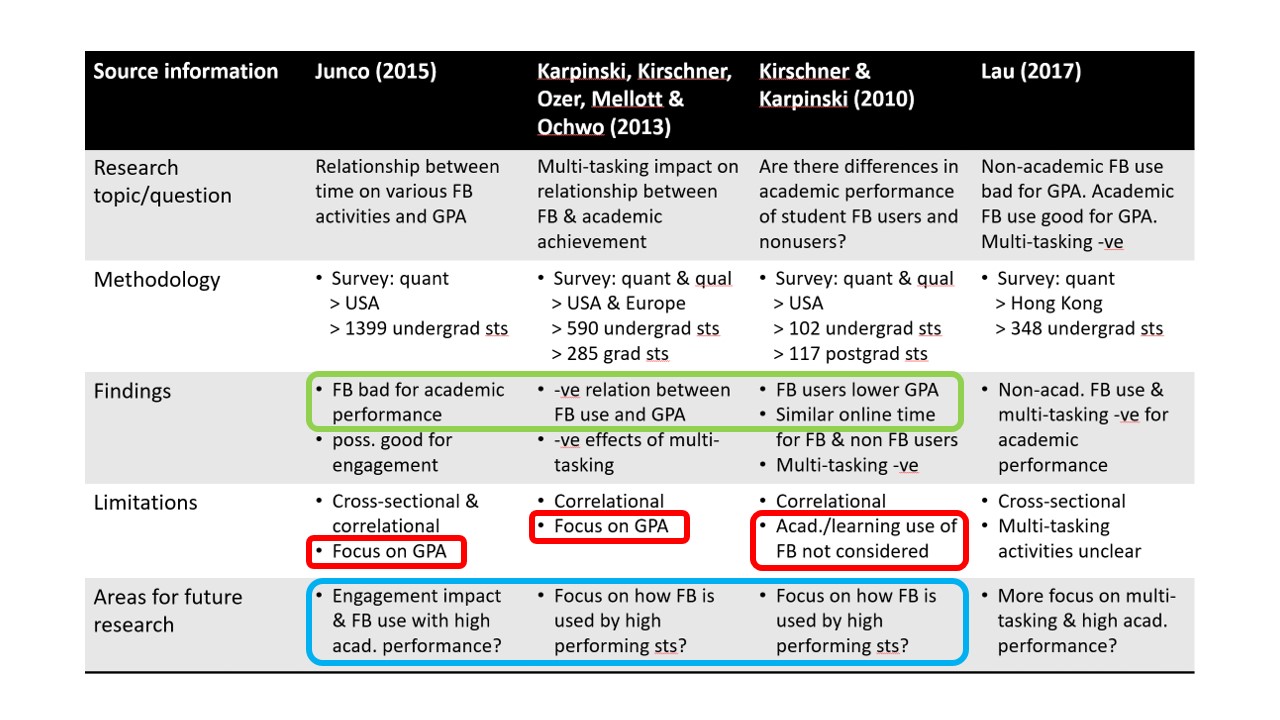As a research student you have to read a lot! You'll need a quick way to decide if you should read something in close detail or not. Then you'll need a way to record important details, such as publication information, research findings, etc.
Effective reading strategies include:
- Skimming
- Reading abstract and conclusion sections
- Using a reading grid
Video (1:53)
Examples and explanation of key reading strategies with software tips.
Skim reading
Headings and information on the first page of articles can help you decide if you should read further.

Other key information about the research may also be found under common headings throughout the article. (You may not need to read the whole thing).
Reading abstract and conclusion sections
By reading the abstract and conclusion, you can quickly decide if something is relevant to your research and worth reading in detail. This is because these sections usually contain key information about the research.

Example reading grid
A reading grid helps you record important information from multiple readings. Each column contains notes from one source; each row matches specific aspects of research.

Organising your notes in this way makes similarities and differences easy to see, such as similar or contrasting research findings, and differences in research methods, etc.
More videos about research writing
AUT academic writing YouTube channel
More from AUT's Graduate Research School
Online resources for research students
References
From teaching materials (example texts and images)


